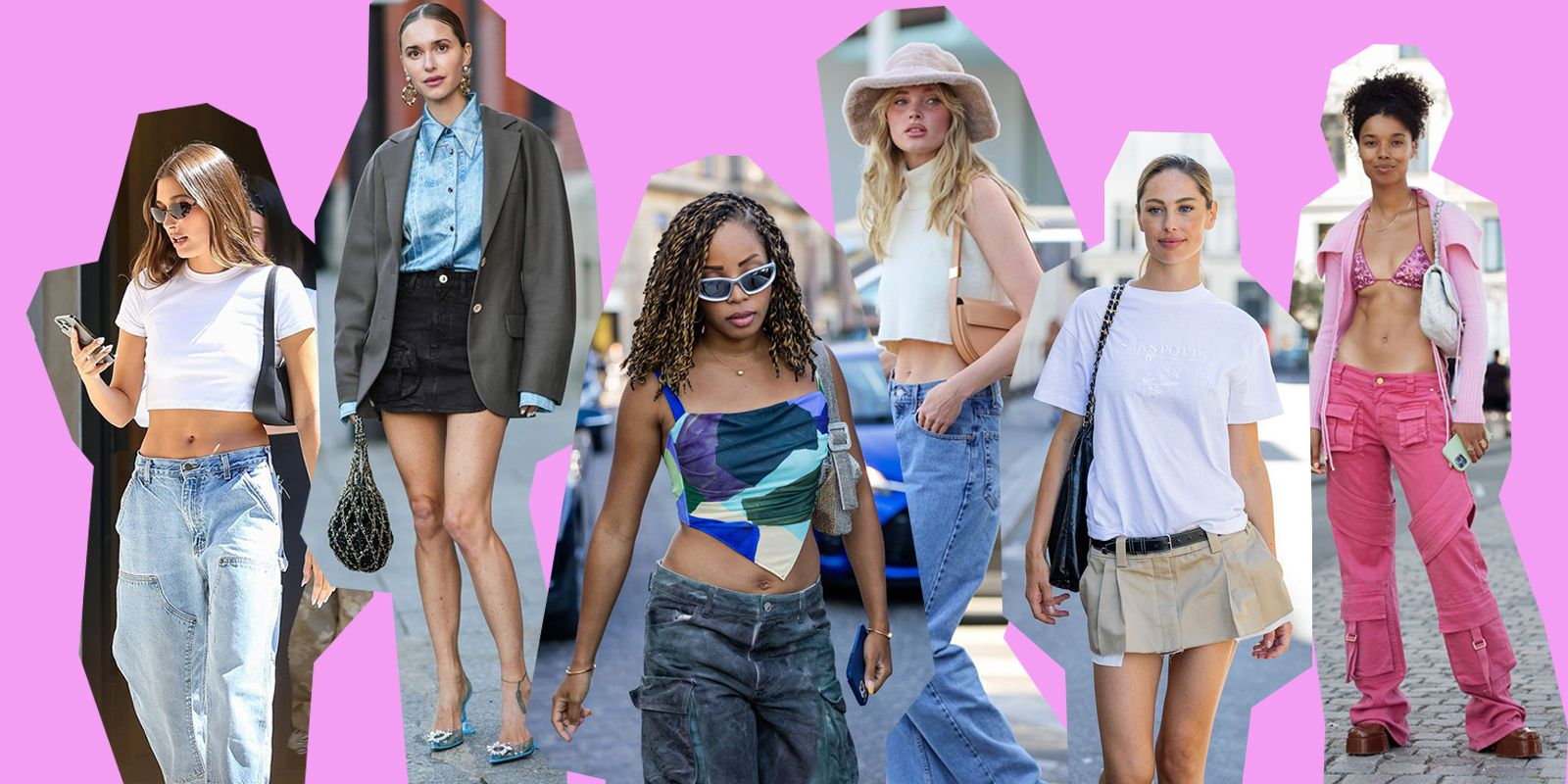Break down the Y2K comeback—from baby tees to low-rise jeans—and see how Gen Z is making early-2000s fashion their own.
{{ vm.tagsGroup }}
17 Oct 2025
5 Min Read
Emma Chee Luo Yi (Contributing Writer)
Break down the Y2K comeback—from baby tees to low-rise jeans—and see how Gen Z is making early-2000s fashion their own.
A stroll through your local shopping mall tells you everything you need to know about the fashion language of today’s youth: boys rocking baggy jeans, statement jackets, and tinted sunglasses, while girls glide by with a starlight of hair clips, dresses layered over flared trousers, and fluffy keychains bouncing from their shoulder bags—plus a second-hand compact camera dangling from their wrist to capture it all. These aren’t just passing fads sweeping through pop culture; this is the irresistible revival of the Y2K, baby!
Rebellious, playful, experimental, and unapologetically attention-stealing—like a time capsule cracked open, Y2K has burst back into our lives in all its glamour. Beyond the runways, we’re seeing early-2000s music, makeup looks, and hairstyles making a comeback across social media. Vintage stores are booming, digital and disposable film cameras are finding new life, and the flash-soaked, grainy aesthetic is everywhere. Even K-pop artists are echoing the Y2K sound and style in their music and performances.
So why is a trend born over twenty years ago suddenly pulsing at the heart of youth culture today? In this article, we trace the moment Y2K first emerged onto the scene, revisit the defining pieces that shaped the era, explore what its sparkling return says about our times—and how Gen Z is remixing it with sustainability and thrift culture in mind.
Feature image credit(s): Chelsea Stahl for NBC News
‘Y2K’—short for ‘Year 2000’ and originally referring to the ‘millennium bug’—described the potential computer failures caused by two-digit year coding, where computers recorded years such as ‘97’ for ‘1997’. This risked disrupting vital systems worldwide at the turn of the millennium, as computers might interpret ‘00’ as 1900 instead of 2000.
While the bug ultimately never materialised (phew, thank goodness!), the term ‘Y2K’ soon evolved beyond its technical roots to capture the futuristic optimism of a world stepping boldly into a digital century. The early 2000s not only welcomed iPods, hybrid cars, camera phones, and GPS (Global Positioning System), but also the neon chaos of Web 1.0 visual language: glittery MySpace profiles, pixelated graphics, and endless MSN chats that heralded the dawn of internet culture.

That same tech-utopian energy soon spilt into pop culture and crystallised into what we now call ‘the Y2K aesthetic’. The era was dominated by MTV, reality shows, glossy magazines, and celebrity personalities, where style, media, and music staged visions of tomorrow. Fashion icons like Paris Hilton, Britney Spears, and Christina Aguilera—alongside on-screen favourites like The O.C. and The Simple Life—set the tone for a generation obsessed with sparkle and rebellion. In this context, the look of the time mirrored its spirit: a shimmering collision of novelty, defiance, and exuberance, framed by a futuristic-retro edge, reflecting a world teetering on the brink of the digital age.
Photo credit(s): Harper's BAZAAR Japan
Having uncovered the essence of Y2K, let’s zoom in on the signature pieces that define its look. From tech-inspired details to hyper-feminine flair, these wardrobe staples ruled the early 2000s—and rule again today:
Fashion has always been cyclical, with major trends re-emerging roughly every twenty years, and Y2K is no exception. Its global revival has been supercharged by social media platforms like TikTok and XiaoHongshu, where creators remix early-2000s looks with their own individual flair for a new generation. High-profile pop culture figures such as Olivia Rodrigo, Dua Lipa, Charli XCX, NewJeans, and LE SSERAFIM have further propelled the aesthetic into the mainstream through their brand, visual storytelling, and music videos, merging retro charm with a contemporary spin.

Yet the return of Y2K isn’t just about recycled trends; it also reflects the uncertainties of our own era—shaped by political polarisation, climate anxiety, and the relentless pace of technological change. In this sense, the sparkle and rebellion of Y2K resonate as both a nostalgic escape and a playful response to the unpredictability of modern life.
As the Y2K aesthetic reclaims the spotlight, today’s trendsetters are turning to thrift stores, spurred by rising costs, growing environmental awareness, and a desire for authenticity. For many, thrifting lies at the heart of this renaissance: a budget-friendly, sustainable alternative to fast fashion and the most immediate way to unearth genuine millennium-era pieces.
Beyond practicality, thrifting has also become a form of self-expression, allowing individuals to craft distinctive outfits while channelling the spirit of the early 2000s. In this new era, Y2K isn’t just about looking back—it’s about redefining what came before, transforming what was once consumer-fuelled glamour into a statement of conscious, value-driven style.
Y2K’s resurgence is more than a simple fashion comeback; it stands as a testament to how each generation reinterprets the past to express identity in the present. Once defined by futuristic optimism and playful rebellion, the look now inspires creativity, intentionality, and individuality.
In a world characterised by rapid change, constant uncertainty, and digital overload, Y2K reminds us that revisiting the past isn’t about imitation—it’s about reinventing style, reclaiming confidence, and forging connection, proving that the glittering echoes of the early 2000s still have something vital to say today.
Emma Chee Luo Yi pursued Cambridge A Level at Taylor's College before attending the University of Western Australia. A law student with an artistic soul, she studies during the day and writes, draws, or crochets at night!
